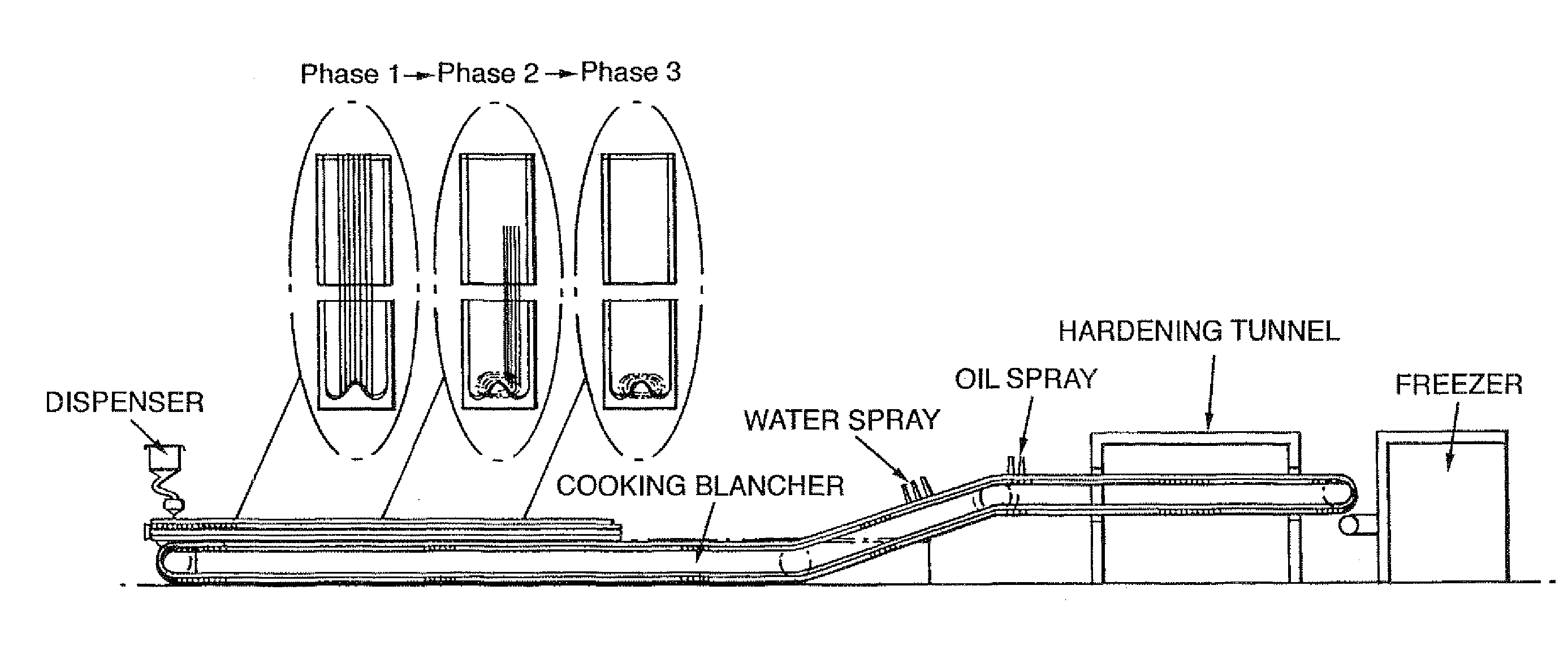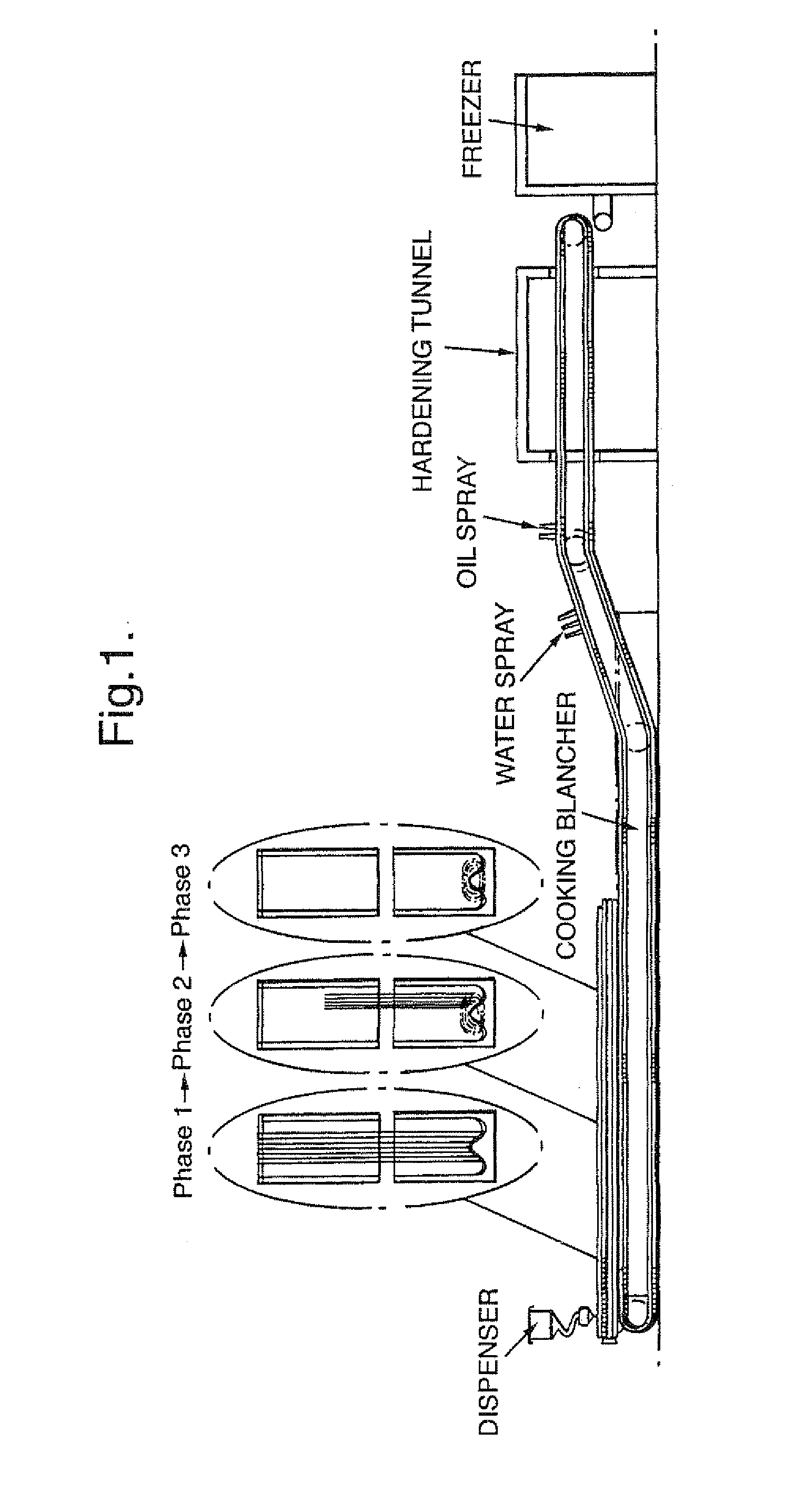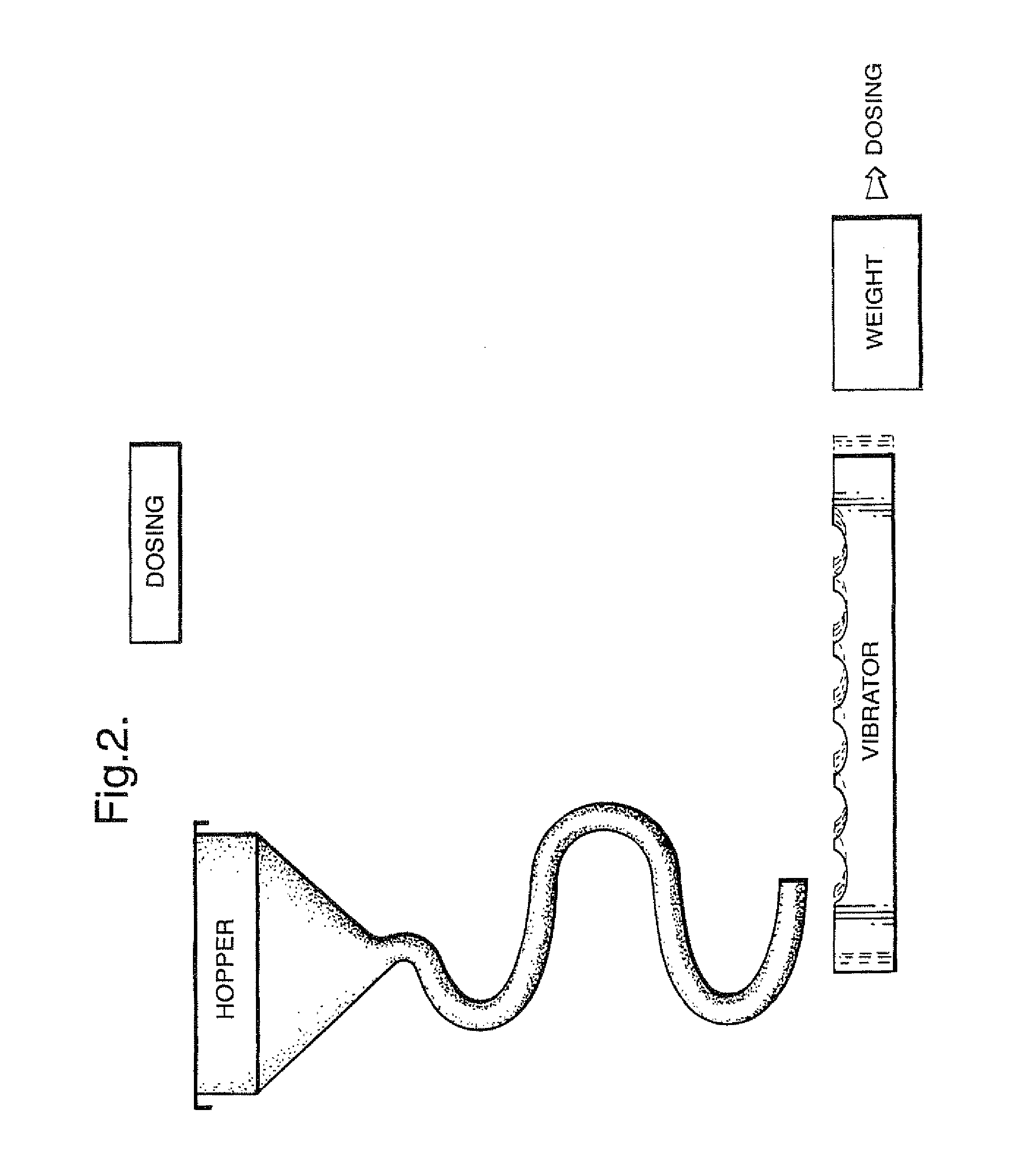Frozen Food Product
a technology for frozen food and nests, applied in the field of frozen food products, can solve the problems of unsuitable nests for inclusion in re-heatable frozen meals, undesirable cutting of pasta lengths, and inability to achieve ‘al dente’ textur
- Summary
- Abstract
- Description
- Claims
- Application Information
AI Technical Summary
Benefits of technology
Problems solved by technology
Method used
Image
Examples
Embodiment Construction
[0021] The exposure of pasta dough to high temperatures during drying procedures has considerable effects on the compositional structure of the dough which serve to improve the perceived texture when cooked.
[0022] Gluten denaturation occurs from 60 to 80° C. and results in the formation of a protein lattice structure which entraps starch particles and helps to prevent starch loss to the cooking water during re-hydration. Although there are a number of techniques which would be suitable for the drying of pasta dough for the purpose of the invention, it is preferable that the pasta dough undergoes a High Temperature Short Time (HTST) drying procedure.
[0023] A high quality flour with a high gluten content, for example Durham wheat derived semolina flour, is preferably used in the dough since this will give rise to a dense lattice structure when dried. Consequently yielding a higher quality product with better textural properties when re-hydrated.
[0024] It must be appreciated however...
PUM
 Login to View More
Login to View More Abstract
Description
Claims
Application Information
 Login to View More
Login to View More - R&D
- Intellectual Property
- Life Sciences
- Materials
- Tech Scout
- Unparalleled Data Quality
- Higher Quality Content
- 60% Fewer Hallucinations
Browse by: Latest US Patents, China's latest patents, Technical Efficacy Thesaurus, Application Domain, Technology Topic, Popular Technical Reports.
© 2025 PatSnap. All rights reserved.Legal|Privacy policy|Modern Slavery Act Transparency Statement|Sitemap|About US| Contact US: help@patsnap.com



